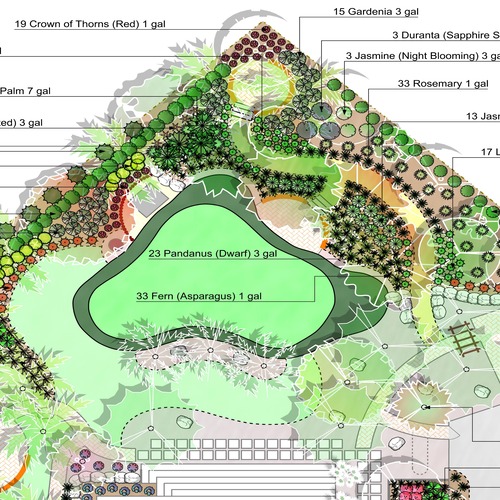
Landscape design has come a long way from sketches on paper to fully interactive digital renderings. Modern landscape design software is at the forefront of transforming how designers visualize, plan, and execute their projects. This powerful technology is reshaping the industry, enabling landscape architects, designers, and contractors to create visually compelling presentations, streamline workflows, and deliver exceptional results.
This blog highlights the benefits of using landscape design software to take your projects to the next level while meeting client expectations with precision and efficiency.
How Landscape Design Software Enhances Project Visualization
Brings Ideas to Life
One of the most significant advantages of landscape design software is its ability to bring ideas to life. Instead of relying on flat, two-dimensional sketches, these tools allow designers to create immersive and realistic renderings of their concepts. Clients can now experience the design in 3D, complete with fully scaled dimensions, textures, and lighting simulations.
This level of visualization helps clients better understand the final outcome, providing a tangible preview of their space. Whether it’s a backyard garden or an expansive park, the ability to visualize the future ensures alignment between the client’s vision and the designer’s plan.
Facilitates Better Communication
Poor communication during the design process often leads to misunderstandings and rework. Landscape design software bridges the gap between clients and designers by enabling clear and detailed presentations. Features like walkthrough animations, 360-degree views, and layered designs allow both parties to explore and discuss the project in detail.
When clients see a realistic representation of the design, they can provide actionable feedback upfront, reducing last-minute changes. This transparency nurtures trust and creates a collaborative design process.
Streamlining the Delivery Process
Saves Time on Revisions
Design revisions are inevitable, but they don’t have to be time-consuming. Landscape design software gives professionals the flexibility to update designs quickly. Unlike manual drawings, where significant revisions might mean starting over, digital tools make it easy to add new elements, adjust layouts, or modify textures with minimal effort.
This efficiency goes beyond saving time. It ensures that any changes are implemented accurately, keeping the project on schedule.
Optimizes Workflow
Seamless integration is another benefit of landscape design software. Many tools incorporate features that allow you to manage your entire workflow from a single platform. This includes creating initial drafts, generating professional reports, and sending detailed construction-ready plans.
Having all these features under one roof eliminates the need to rely on separate tools or software, simplifying the design process and boosting productivity.
Enhances Accuracy
One mistake in a manual drawing or miscalculated measurement can derail an entire project. Software solutions minimize errors by allowing precise dimensions, scaling, and real-time calculations.
For larger projects, features like terrain modeling ensure that all landscaping plans align perfectly with existing site conditions. Accurate details from the start mean fewer errors during installation, ultimately minimizing costly delays.
Key Benefits for Clients
Fosters Realistic Expectations
Clients often find it challenging to imagine how a project will look based on sketches alone. With design software, you can present realistic visuals that help set clear and achievable expectations.
Interactive presentations give clients confidence in your expertise, ultimately leading to higher satisfaction and stronger client relationships.
Provides Real-Time Modifications
Clients’ minds often change during the planning phase, and accommodating these changes without delay is crucial. Landscape design software allows designers to implement changes during meetings in real-time. This dynamic capability ensures designs evolve based on input, improving the overall approval process.

